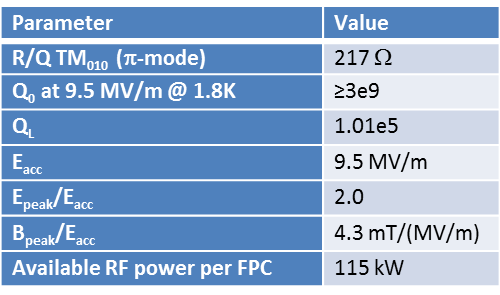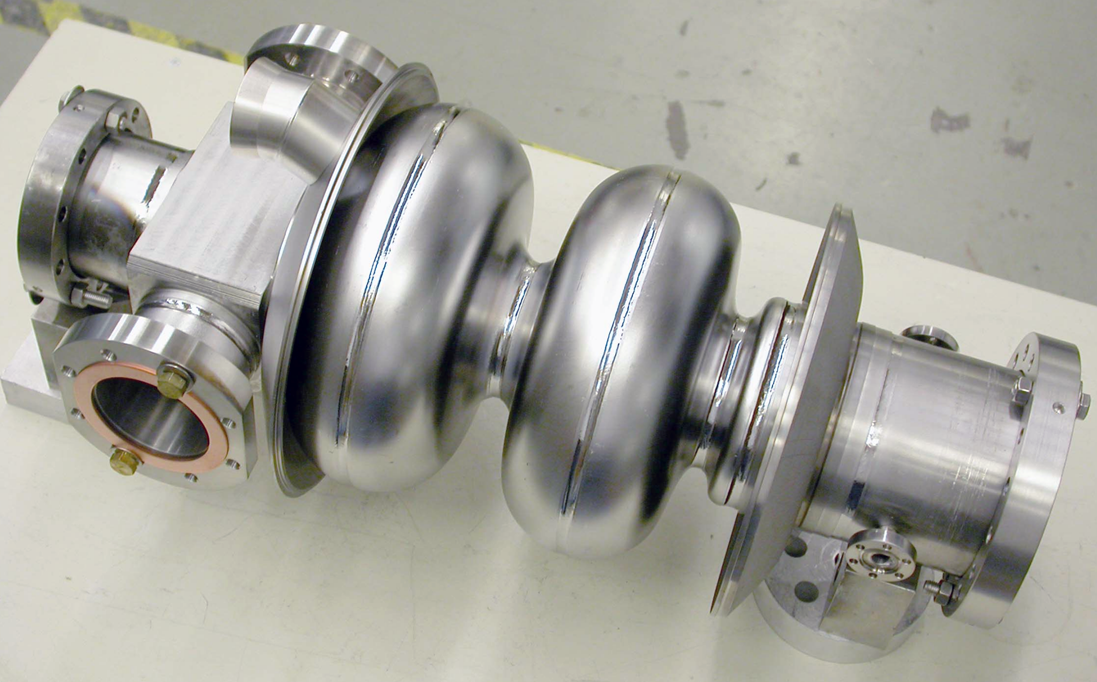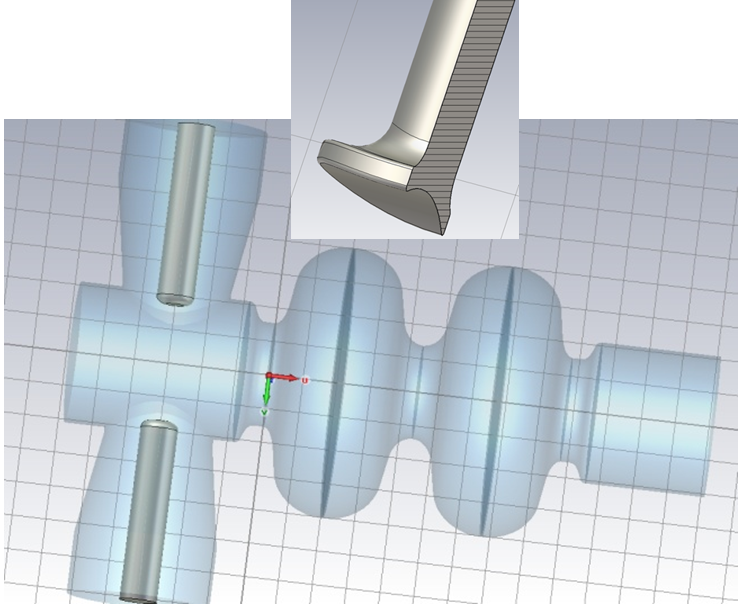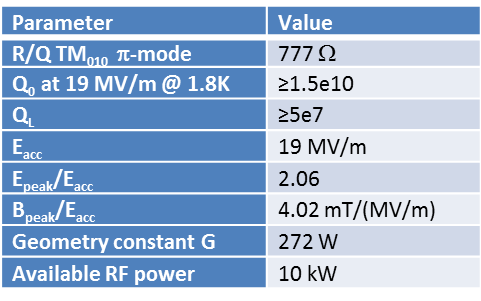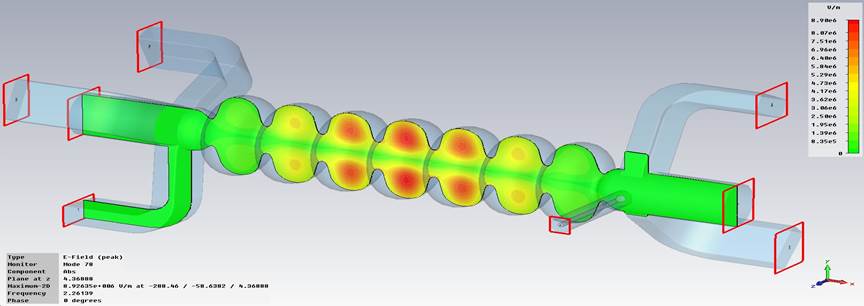bERLinPro
SC RF Accelerating Structures
Booster Cavity Development
As part of the bERLinPro injector in the Booster the electrons are accelerated from about 2 MeV out of the photo-injector up to 6.5 MeV. The booster cavities experience strong beam-loading and as the available power is limited, only cavities with few cells achieve a reasonable high field to allow the needed energy gain on a rather short distance. The booster linac will be made up of three 2-cell cavities of which two deliver 2.2 MV each while one is operated in zero crossing mode. The cavities will thus deliver 220 kW of beam power, which requires strong coupling with loaded Q of the order of 105. The cavities are a variant of Cornell’s ERL booster cavity design. They feature a TESLA-like shape, which is optimized to damp the lowest dipole mode via enlarged beam tubes and increased outer iris diameters. This design was changed by HZB at the coupler side to house KEK’s fundamental high power coupler (FPC) design.
To reduce the effect of emittance growth by coupler kicks, the fundamental high power couplers (FPC) are arranged in pairs, each delivering 110 kW. Several design versions were evaluated with respect to coupler kicks, a transverse field contribution by the asymmetry represented by the coupler tips penetrating into the beam tube.
To increase the coupling strength for a given beam-to-coupler tip distance, as well as to reduce the transverse kick effect, a golf tee shaped antenna tip was added to KEK’s design and optimized in its shape.
Reference Publications:
A. Neumann et al.: The BERLinPro Booster Cavity Design, to be published on IPAC2104
Linac Cavity Development
Within the Linac cavity the actual energy recovery process takes place and it is thus the key component of the bERLinPro ERL. The cavity will accelerate the injected low energy beam from about 6.5 to 50 MeV and decelerate the returned beam with a p phase shift from the high energy back to injection energy. The decelerated beam will deposit its energy in the RF field, thus that the net beam loading at perfect recovery operation should be close to zero. Nevertheless, the cavity will have to operate at high CW field levels of nearly 20 MV/m at a Q0>1.1010 and interact with a high average beam current of 2*100 mA.
To avoid beam break-up, an instability driven by the resonant interaction between beam and higher order deflecting modes (dipole), the higher order mode (HOM) spectrum needs to be calculated and the shunt impedances of dangerous modes minimized while their damping has to be maximized.
Further, to reduce the probability of field emission, the ratio between peak surface electric field and mean accelerating field has to be minimized.
Reference Publications:
A. Neumann et al.:Status of the HOM Calculations for the BERLinPro Main Linac Cavity, ICAP 2012
The concept pursued by HZB at the moment is to combine Cornell’s ERL main Linac cell design with a waveguide based HOM damping design mainly developed by JLab.
To allow for variable coupling and operation at high loaded quality factor (low coupling strength, QL=5e7), one waveguide is replaced by a TTF-III style fundamental power coupler.
At the moment end cell studies are performed to achieve a field flat design with highest damping of the HOMs. Following studies of the whole coupled structure of a three cavity string need to demonstrate, that propagating HOM are sufficiently damped to avoid further unwanted beam-cavity interaction.
Linac Module
Detailing of the linac module starts as soon as the linac cavity design is fixed.

